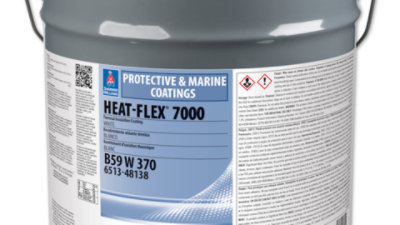Table 1. Lab Testing of Wet Insulation vs. Dry Insulation
The R-value of an insulation system drops rapidly as water infiltrates the system and humidity rises.
Advanced Thermal Insulative Coatings Reduce Cost and Maintenance Burdens, While Ensuring Employee Safety
A single, thin coat of material replaces bulky barriers and insulation systems to protect personnel from burns
By Neil Wilds, Global Product Director – CUI, Erik Dammen-Brower, R&D Chemist I, and Jeremy Daum, R&D Senior Scientist, Sherwin-Williams Protective & Marine

Offshore oil and gas platforms and vessels, as well as onshore refineries and petrochemical plants, often require personnel to work near equipment operating at high temperatures, putting them in potential harm. To protect those workers from skin-contact burns in compliance with U.S. Occupational Safety and Health Administration (OSHA) guidelines, asset owners have adopted two principal solutions: physical barriers and systems featuring insulation and cladding.
Physical barriers, such as safety caging and fencing, protect personnel by preventing them from getting into close proximity with hot surfaces. While they are certainly effective, barriers are expensive to fabricate and install, occupy significant and valuable production space, and hinder access for asset inspection and maintenance.
Alternatively, insulation systems consist of materials such as mineral wool that are wrapped around or affixed to asset surfaces and then protected with steel or aluminum cladding to shield the insulation from damage and limit moisture ingress. Due to their thickness, cladded insulation systems offer excellent protection against skin-contact burns. When operated indoors or in consistently dry conditions, they also offer the added benefit of retaining process heat and saving energy, particularly when used on assets running high-temperature processes. However, conventional insulation systems can lose much of their insulating R-value when wet, which reduces their insulating performance. Plus, they can be costly to install and require considerable effort and expense to properly inspect. Inspections are critical because if a cladded insulation system is penetrated by moisture or humidity, corrosion under insulation (CUI) becomes a hidden threat that could compromise the integrity of the asset being protected. Such inspections require periodic removal of both cladding and insulation, followed by physically examining the asset’s surface and measuring its thickness with a special tool.
An alternative solution to protecting personnel from skin contact burns eliminates the need for physical barriers or cladded insulation systems in favor of applying thermal insulative coatings (TICs) directly on assets. Such TICs can be applied in one or more coats to provide sufficient skin-contact burn protection per OSHA guidelines, with formulations able to resist heat well enough to make coated assets operating at temperatures up to 350°F (177°C) safe to the touch without any additional physical protection mechanisms (Figure 1). Designed with the primary purpose of personnel burn protection, TICs also help to eliminate the risk of CUI in such applications by replacing traditional insulation with an insulative coating that bonds to the asset’s surface, thereby removing the typical corrosion zone found between the steel and insulation. Further, TICs can offer sufficient insulating R-value to help maintain a reasonable level of process heat within coated assets, enabling even a single coat at 50-75 mils dry film thickness (DFT) to provide both personnel protection and energy-saving process insulation (Figure 2).
Burn Protection: Preventing Injuries
In high-temperature processing environments, where just a few seconds of incidental contact with a hot pipe or surface can cause a skin-contact burn, safety is a key concern. To protect personnel from burns, OSHA references the ASTM C1055 Standard Guide for Heated System Surface Conditions that Produce Contact Burn Injuries, which establishes a five-second maximum exposure time for avoiding skin contact burns and suggests that simulated skin temperatures remain at or below 140°F (60°C) to minimize injury potential. To ensure compliance with that standard, any asset that’s within about eight feet of a worker will need to be protected via a physical barrier, an insulation system or an insulative coating. That distance approximates how far a six-foot-tall worker can reach with extended hands.
By specifying an insulative coating instead of a physical barrier or insulation system, facilities can meet OSHA burn protection requirements and eliminate the fabrication, installation and care associated other alternatives.
But how can a relatively thin, spray-applied coating provide thermal protection that would replace a physical barrier or a layer of mineral wool insulation? After all, 50-75 mils DFT of coatings equals just 1.3-1.9 mm of dried material on an asset’s surface. To answer this question, one must consider the composition of a TIC like Heat-Flex® 7000 from Sherwin-Williams Protective & Marine.
Heat-Flex 7000 is a water-based, acrylic TIC that contains silica-based microspheres and low thermal conductivity aerogel particles. These small gas-filled spheres and aerogel particles spread out across the coating film when applied, creating a surface with a high content of small, closed-cell air pockets. Because air has very low thermal conductivity, these enclosed air pockets function as additional insulation that effectively blocks the transfer of heat energy through the coating. As a result, coated surfaces of assets that contain fluids and gases that are stored or flowing at up to 350°F (177°C) inside can remain safe to touch (i.e., with simulated skin temperatures of ≤140°F (60°C)) for at least the OSHA-mandated five-second threshold (Figure 3). Systems with operating temperatures exceeding 350°F, including steam piping and boiler ductwork, may still require a physical barrier or insulation system.
Following application and curing of an insulative coating, inspectors can assure the coating’s personnel skin-contact protection capabilities using a thermesthesiometer. This device measures temperature through an encapsulated material that simulates the thermal properties of human tissue and skin. When placed in contact with a coated asset, this instrument can confirm that the asset’s surface temperature is within OSHA requirements for skin-contact and burn protection. This special instrument is required because typical surface temperature probes do not provide an accurate reading of skin temperature.
Maintaining Safe-Touch Properties Despite Moisture Exposure
When first installed and completely free of moisture content, traditional insulation and cladding systems are highly effective at maintaining safe-to-touch temperatures. However, the high insulating R-values of these systems can diminish quickly if they are infiltrated by moisture (Figure 4), which may come from rainfall, humidity, condensation and water from sprinkler or safety systems. Moisture may penetrate insulation through any cracks, joints or irregularities in the cladding system.
Whatever the moisture source, water or water vapor that readily infiltrates mineral or glass wool insulation and displaces the air held within those materials, reduces the air content that is critical to maintaining the material’s rated R-value. Tests show that typical mineral wool insulation material will lose up to 85% of its R-value if it is infiltrated by just 10% water by volume (Table 1).
And, because water infiltration can be uneven across the varying surfaces of an asset (e.g., vertical tank walls vs. flat roofs), the amount of R-value reduction for a cladded insulation system can vary widely, resulting in the potential for hot spots that exceed the OSHA safe-to-touch guidelines. For example, the exterior cladding on the underside of an insulated process pipe may be too hot to touch following water infiltration, as moisture concentrates in this area and will enable greater heat transfer through the water-logged insulation.
TICs like Heat Flex 7000 effectively resist moisture penetration and quickly shed any moisture that is temporarily absorbed, making them subject to minimal, if any, thermal conductivity changes. So, although the R-value of a TIC application does not equal the R-value of a “dry” insulation system, the TIC’s air-filled microspheres, low thermal conductivity aerogel particles and closed-cell film are better able to provide consistent safe-touch compliance than a moisture-laden cladded insulation system.
Bottom Line: Personnel Protection, Without High Expense or Risk of CUI
The right coating can play a significant role in enhancing workplace safety and protecting people from avoidable accidental injuries. TICs can replace bulky safety caging and physical insulation systems in a wide variety of oil and gas, refinery and petrochemical plant applications. The coatings can enhance plant safety by offering OSHA-required burn protection, while also eliminating the dangers of CUI. Further, facilities can realize these benefits while maintaining sufficient process heat inside many coated assets. The insulating characteristics of spray-on TICs also help reduce ambient temperatures around high-temperature operating assets, as well as reduce noise levels. Because the coatings can be used almost anywhere that traditional isolation or insulation systems are used, all these benefits combine to enable safer, more economical oil and gas production and refining operations.
ABOUT THE AUTHORS
Neil Wilds is Global Product Director – CUI for Sherwin-Williams Protective & Marine. With 36 years of technical coatings experience, Wilds develops strategies for long-term asset protection and directs the development of specifications and testing programs. He is a member of several coatings associations including AMPP, NORSOK M501, the International Organization for Standardization (ISO) and others. Contact: Neil.Wilds@sherwin.com
Erik Dammen-Brower is an R&D Chemist I with Sherwin-Williams Protective & Marine. Since joining the division two years ago, he has been working almost exclusively on thermal insulative coatings (TICs). His responsibilities include formulating insulative coatings (both current and next generation), testing their thermal properties and modeling TIC systems. He has developed multiple internal testing procedures used in understanding the physical and thermal properties of Sherwin-Williams’ TICs. Contact: Erik.Dammen-Brower@sherwin.com
Jeremy Daum, Ph.D., is an R&D Senior Scientist with Sherwin Williams Protective & Marine. He joined the company in 2016 and is involved in formulating novel coatings across multiple coating chemistries, including insulative coatings. He has more than 15 years’ experience in developing coatings in an industrial setting. He has a doctorate from The University of Akron in Polymer Science and a bachelor’s degree in chemistry with a polymers and coatings option from North Dakota State University. Contact: Jeremy.Daum@sherwin.com
Figure 1. Using spray-applied thermal insulative coatings (TICs) on assets like process vessels enables facilities to eliminate the need for physical barriers or cladded insulation systems.
Figure 2. Spray-applied thermal insulative coatings (TICs) minimize burn hazards to personnel on hot operating assets. They can also help maintain internal process temperatures, such as on this boiler room pipe.
Figure 3. Forward Looking InfraRed (FLIR) imaging inspections of this ground storage tank reveal the cladded insulation system is providing uneven thermal protection. The red areas indicate areas of excessive heat loss, likely due to saturated insulation material, that may not be safe to touch.
Figure 4. Although this asphalt tank operates up to 220°F (104°C), a spray-applied TIC provides a safe-to-touch surface, while also helping to conserve process heat.
Discover More
Industry Expertise and Innovation
See how we help customers find customized solutions for their project and application challenges.
News
March 28, 2024
Heat-Flex® 7000 Earns Gold for Emerging Technology at Global Tank Storage Awards

Our Oil & Gas Expertise
Explore our industry solutions and technology to help protect your assets.
LEARN MOREProduct Lookup
Find out more about our innovative coatings for a variety of industries.
FIND A PRODUCT
